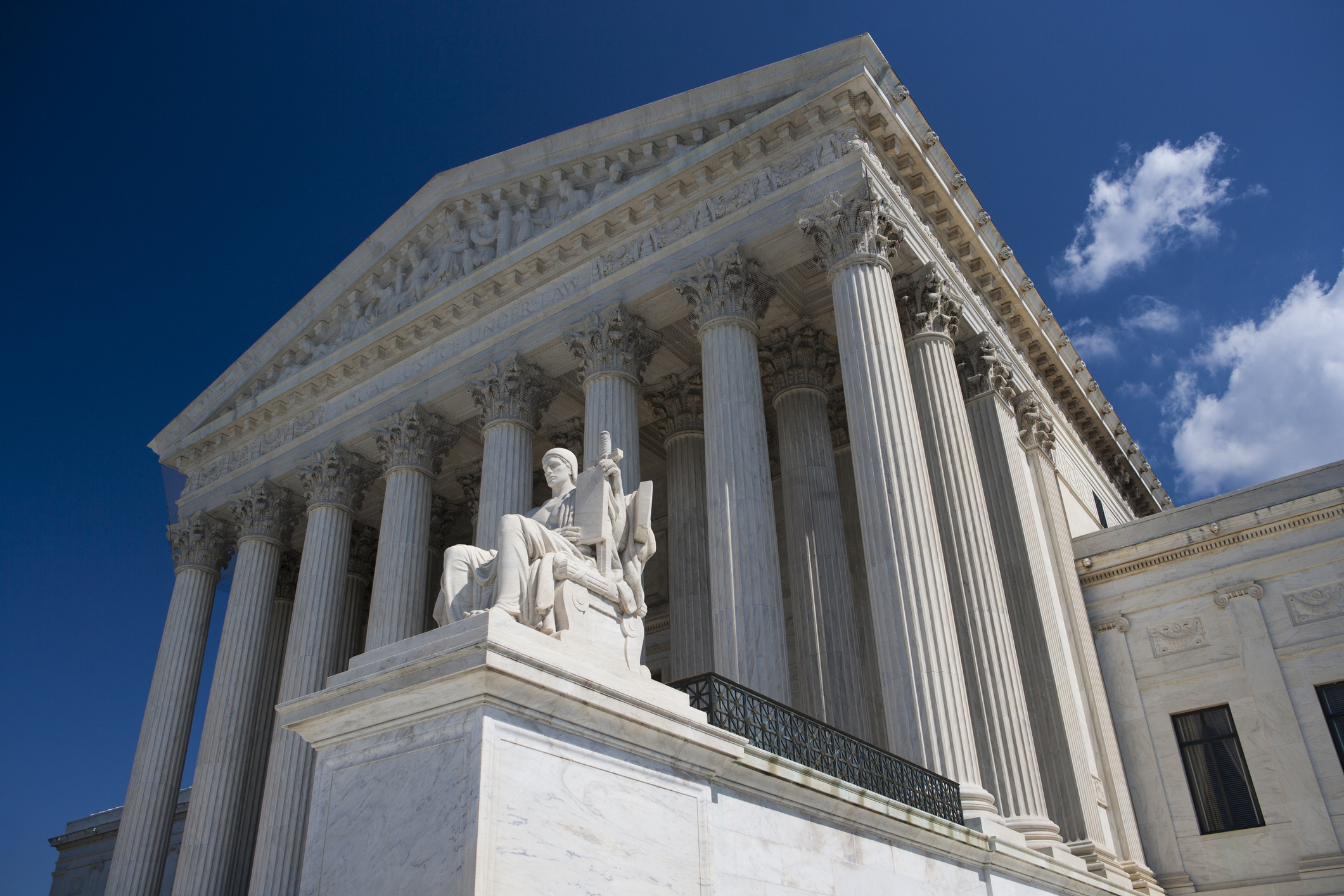
On Tuesday, the Supreme Court will consider whether the government can deny access to guns for those placed under a domestic violence protection order.
Zackey Rahimi had been subject to a domestic violence restraining order in Texas in 2019 after threatening to shoot his girlfriend after physically assaulting her. After a Texas court entered a domestic violence restraining order against Rahimi, he was a suspect in multiple shootings, and police officers found firearms in his apartment. He pleaded guilty to violating the ban on firearms for those subject to domestic violence restraining orders and was sentenced to prison. In July, he wrote a letter from behind bars, apologizing for his actions and saying he would no longer carry a gun, according to the New York Times.
United States v. Rahimi comes to the Supreme Court following a lower court ruling earlier this year that ruled the government cannot take firearms away from people in Rahimi’s position.
The stakes of Rahimi’s case pit the safety of domestic violence victims against the nation’s broad Second Amendment rights. Advocates for victims of domestic violence say the fifth circuit’s decision overlooks public health evidence. An abused woman is five times more likely to be killed by a male partner when there is a firearm in the house, according to a widely-cited 2003 study published in the American Journal of Public Health. “Dangerous people or people with histories of violence should not have access to firearms,” says Angela Ferrell-Zabala, executive director of Moms Demand Action. The effects go beyond the home, she notes, pointing out that many mass shooters end up killing their current or former intimate partner as “part of their rampage.”
Gun rights groups stress that people facing a protection order have not been convicted of a crime. “The Government seeks to turn Americans who have never committed a felony into felons based on their mere act of possessing a firearm, and claims to justify this with historically unsupportable rationales,” gun-rights groups argued in an amicus brief in this case. They stated that Rahimi had agreed to a two-year protective order but was not represented by counsel. “The Government focuses on the alleged criminal activities of Mr. Rahimi, with five pages of detailed facts, conflating his alleged felonies with his entirely unrelated disarmament based on a civil order,” they wrote.
More From TIME
While domestic violence protective orders vary across states, in general, “People aren't just getting them for nothing. Judges aren't just handing them out like candy,” says Kelly Roskam, the director of law and policy at the Johns Hopkins Center for Gun Violence Solutions. Three requirements need to be met for federal law to apply to allow the government to take away someone’s guns: a protective order, the person’s receipt of notice of and an opportunity to participate in a hearing that led to the order, and a finding in the order that the person represents a credible threat to the partner or child, or is prohibited from using or threatening to use force against them.
The Supreme Court could also use the Rahimi case to address a broader question of Second Amendment interpretation and how closely the nation’s laws should be compared to the way firearms were regulated in 1791.
In the court’s 2022 decision in New York State Rifle & Pistol Association Inc. v. Bruen, the Supreme Court ruled that the Constitution protects the right to carry a handgun for self-defense outside of the home. It also imposed a general test for gun restrictions that includes evaluating whether a measure would be “consistent with this nation’s historical tradition.”
Bruen’s new standard “introduced a lot of uncertainty and divergent results in the lower courts,” says Joseph Blocher, a professor at Duke University School of Law and gun rights expert. “It's quite hard for judges, lawyers and law clerks to figure out what regulatory traditions were in 1791 when the categories of rights holders and the kinds of weapons available were just so different.”
In this case, for example, laws banning the use of firearms in domestic violence did not exist at the time the Second Amendment was ratified. So lawyers may look for other parallels, such as restrictions on the possession of weapons by people who were found to be dangerous.
“Domestic violence has been around for a very long time,” says Roskam. “And yet we don't see laws specific to disarming domestic abusers at the founding.” (That’s not surprising, Roskam says, given how rare domestic homicide by firearm was at that time.) In Tuesday’s case, the Supreme Court will have the opportunity to weigh how that should factor in to modern gun laws.
More Must-Reads from TIME
- Cybersecurity Experts Are Sounding the Alarm on DOGE
- Meet the 2025 Women of the Year
- The Harsh Truth About Disability Inclusion
- Why Do More Young Adults Have Cancer?
- Colman Domingo Leads With Radical Love
- How to Get Better at Doing Things Alone
- Michelle Zauner Stares Down the Darkness
Write to Sanya Mansoor at sanya.mansoor@time.com